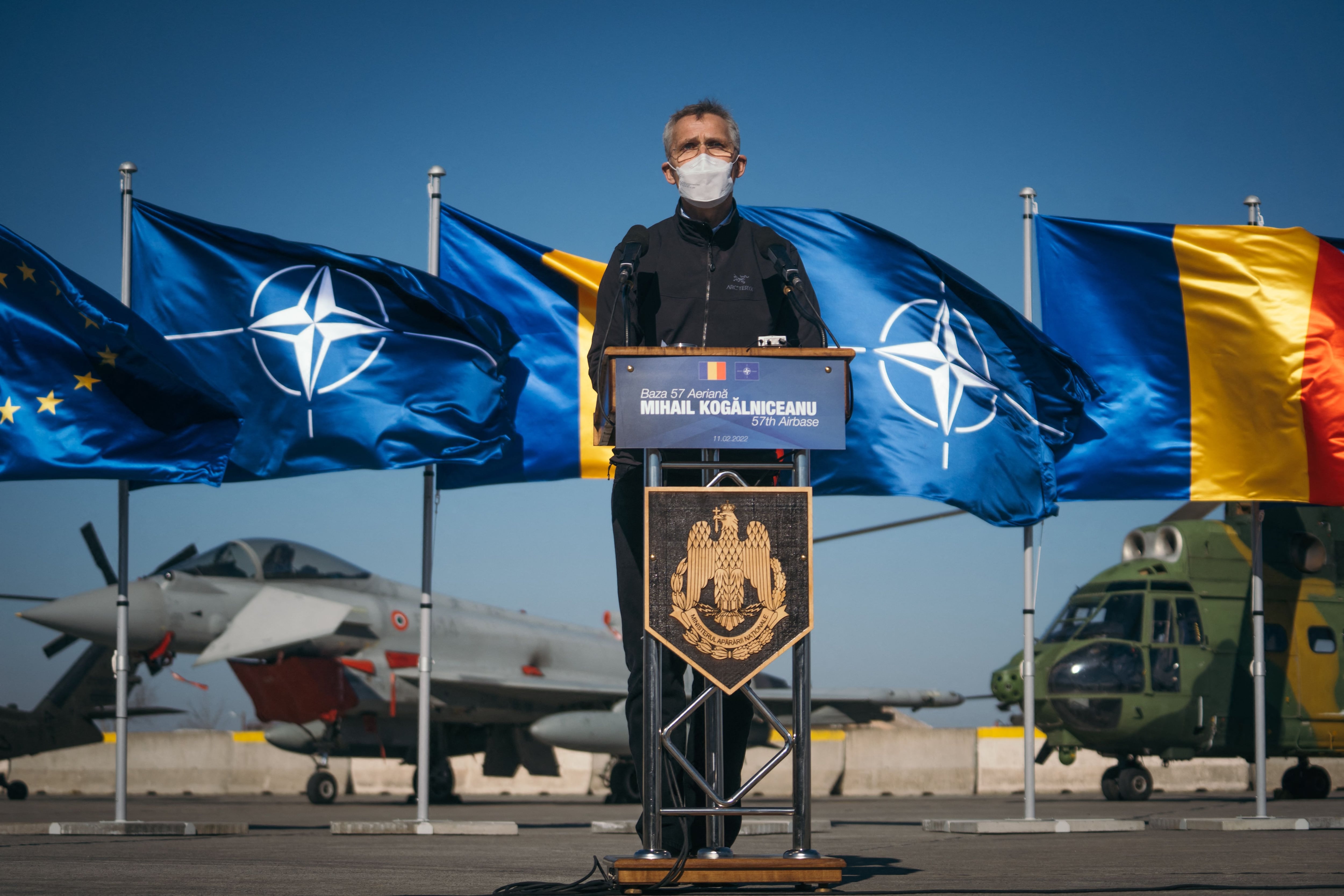

WASHINGTON – NATO members are weighing to send fresh troops to the alliance’s eastern and southeastern member countries, as Secretary-General Jens Stoltenberg on Wednesday dismissed Moscow’s claims that some of its forces are returning to their barracks.
Stoltenberg raised the possibility of sending battle groups to “central and eastern, southeastern Europe” during a NATO defense ministers’ meeting in Brussels on Monday. France had already offered to lead such a formation in Romania, according to the secretary-general.
“Our military commanders will now work on the details and report back within weeks,” he said.
The considerations are part of a package of measures meant to strengthen the alliance’s deterrence posture toward Russia, which has 100,000-plus forces positioned around Ukraine. Leaders in Moscow have insisted the troop movements constitute training, but European and U.S. officials believe the real objective is to have substantial forces assembled to pounce on a pretext for a Ukrainian invasion.
Stoltenberg said there has not been a final decision to create new battlegroups in the style of those already positioned in the Baltic nations, which number roughly 1,500 troops each. “We’ll make that based on advice from military commanders. And of course, it will not necessarily be exactly the same as the battlegroups we have in the Baltic countries, but it’s based on some of the same concept, multinational forces, NATO in the East.”
Meanwhile, Stoltenberg said NATO intelligence services had yet to detect Russian forces drawing down from their positions around Ukraine. “The intelligence we are sharing is actually confirmed also with open sources, with the satellite imagery from commercial satellites,” he told reporters. “So I think it’s very hard to dispute that Russia has amassed well over 100,000 troops and a lot of heavy equipment.”
Russian Foreign Minister Sergei Lavrov last month singled out Romania and Bulgaria — alliance members since 2004 — as two nations where Moscow wants to see NATO de-emphasize its military posture.
That demand comes as Russian leaders make references to the 1997 NATO-Russia Founding Act, which President Vladimir Putin brought up again at a press conference with German Chancellor Olaf Scholz this week.
Written at a time when post-Cold War cooperation between the major geopolitical blocs seemed within reach, the document ties both sides to a laundry list of transparency measures to ensure peace in Europe. On troop deployments, it stipulates that NATO would “carry out its collective defense and other missions by ensuring the necessary interoperability, integration, and capability for reinforcement rather than by additional permanent stationing of substantial combat forces.”
Likewise, Russia would “exercise similar restraint in its conventional force deployments in Europe,” the document states.
Moscow’s continued references to the kind of NATO that existed 25 years ago points to a “basic desire” for security guarantees that harken back to a different time, said Christian Mölling of the Berlin-based German Council on Foreign Relations. “It’s essentially a smokescreen.”
European and U.S. officials have rejected the suggestion that democratic Eastern European nations should submit themselves to a Russian sphere of influence around its borders, an idea running like a thread through recent proclamations from Moscow.
“NATO is a defensive alliance,” Stoltenberg repeatedly said Wednesday. “NATO is not a threat to Russia.”
Sebastian Sprenger is Europe editor for Defense News, reporting on the state of the defense market in the region, and on U.S.-Europe cooperation and multinational investments in defense and global security. He previously served as managing editor for Defense News.



Be the first to comment